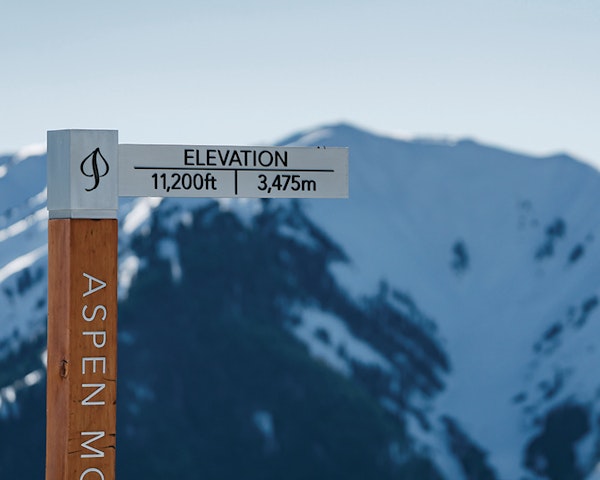
X Games Aspen 2025
X Games, the world’s premier action sports competition, returns to Buttermilk Mountain from January 23-25, 2025.
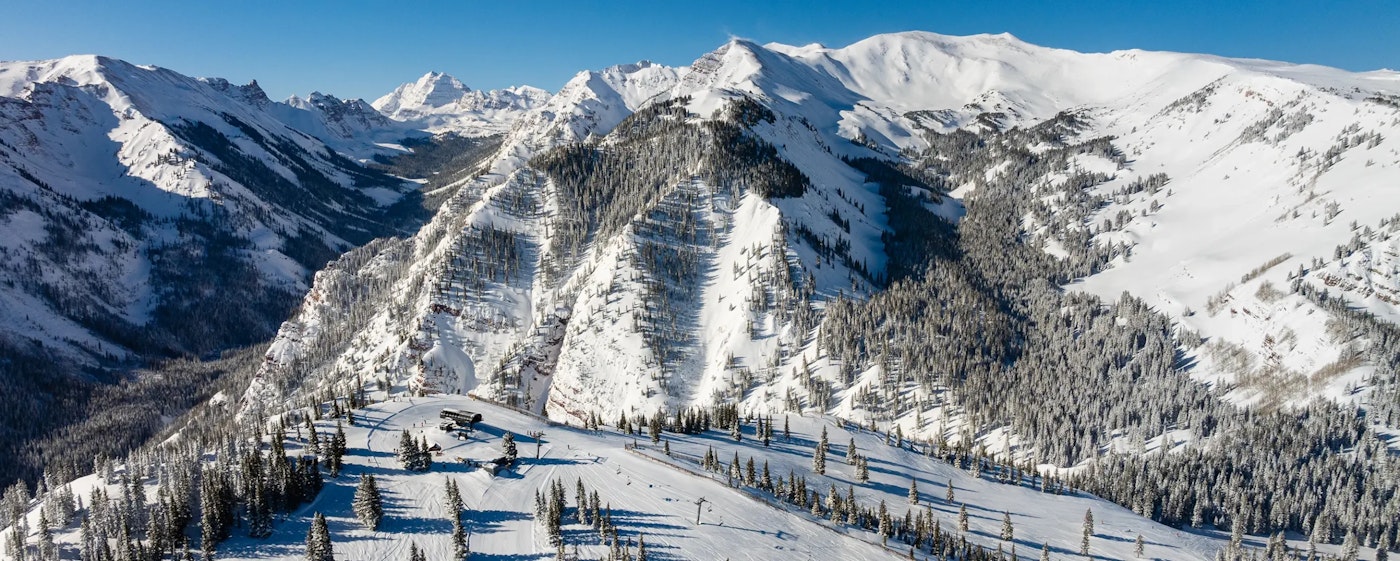
Aspen Snowmass, located in the heart of Colorado's Rocky Mountains, is known for world-class skiing and a vibrant scene of arts, food and entertainment. Sitting just under 200 miles west of Denver, this expansive resort includes four unique ski areas: Aspen Mountain, Aspen Highlands, Buttermilk, and Snowmass.
Summit
12,510ft
Vertical
4,406ft
Terrain
5,500acres
Snowfall
300in/yr
Lifts
41
Runs
366
Terrain Parks
12
Base Elevation
8,104ft
Aspen Snowmass, located in the heart of Colorado's Rocky Mountains, is known for world-class skiing and a vibrant scene of arts, food and entertainment. Sitting just under 200 miles west of Denver, this expansive resort includes four unique ski areas: Aspen Mountain, Aspen Highlands, Buttermilk, and Snowmass.
Each area offers something unique, which not only spreads out the crowds but also provides something for every type of skier. Snowmass features wide-open runs and extensive terrain parks, Aspen Mountain houses incredible, steep expert terrain and Buttermilk provides beginner terrain and is home to the X Games. Aspen Highlands boasts breathtaking views and challenging bowl skiing, especially the iconic Highland Bowl.
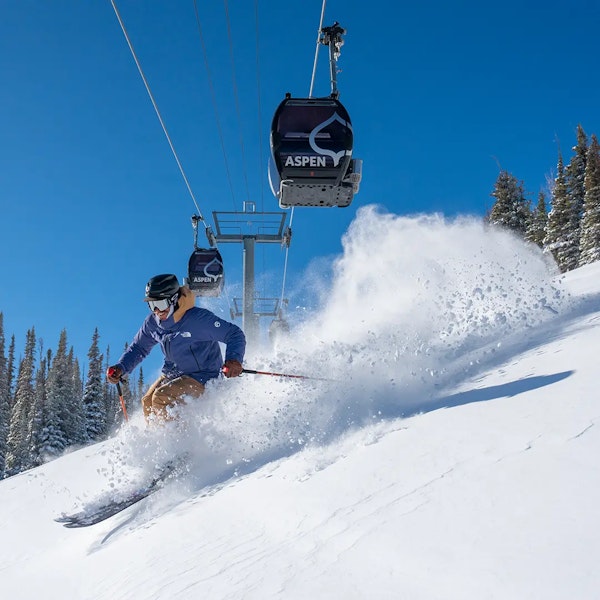
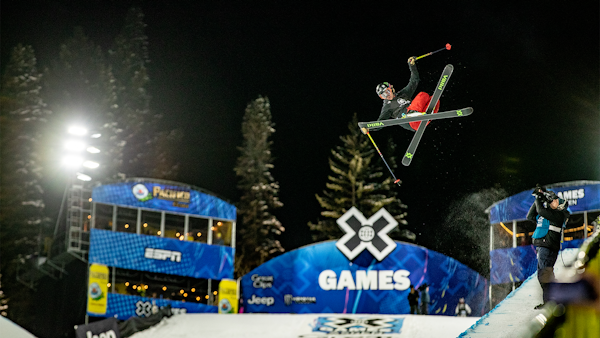
For three weeks in January and February 2025, the world’s foremost park and pipe skiers—along with the best up-and-coming freeskiers—will be progressing, competing and celebrating in one place: Aspen Snowmass.
While the Colorado resort has always hosted premier freeski events, the back-to-back line-up of X Games, Toyota U.S. Grand Prix and Revolution Tour at Aspen Snowmass make up an almost 20-day freeskiing extravaganza...
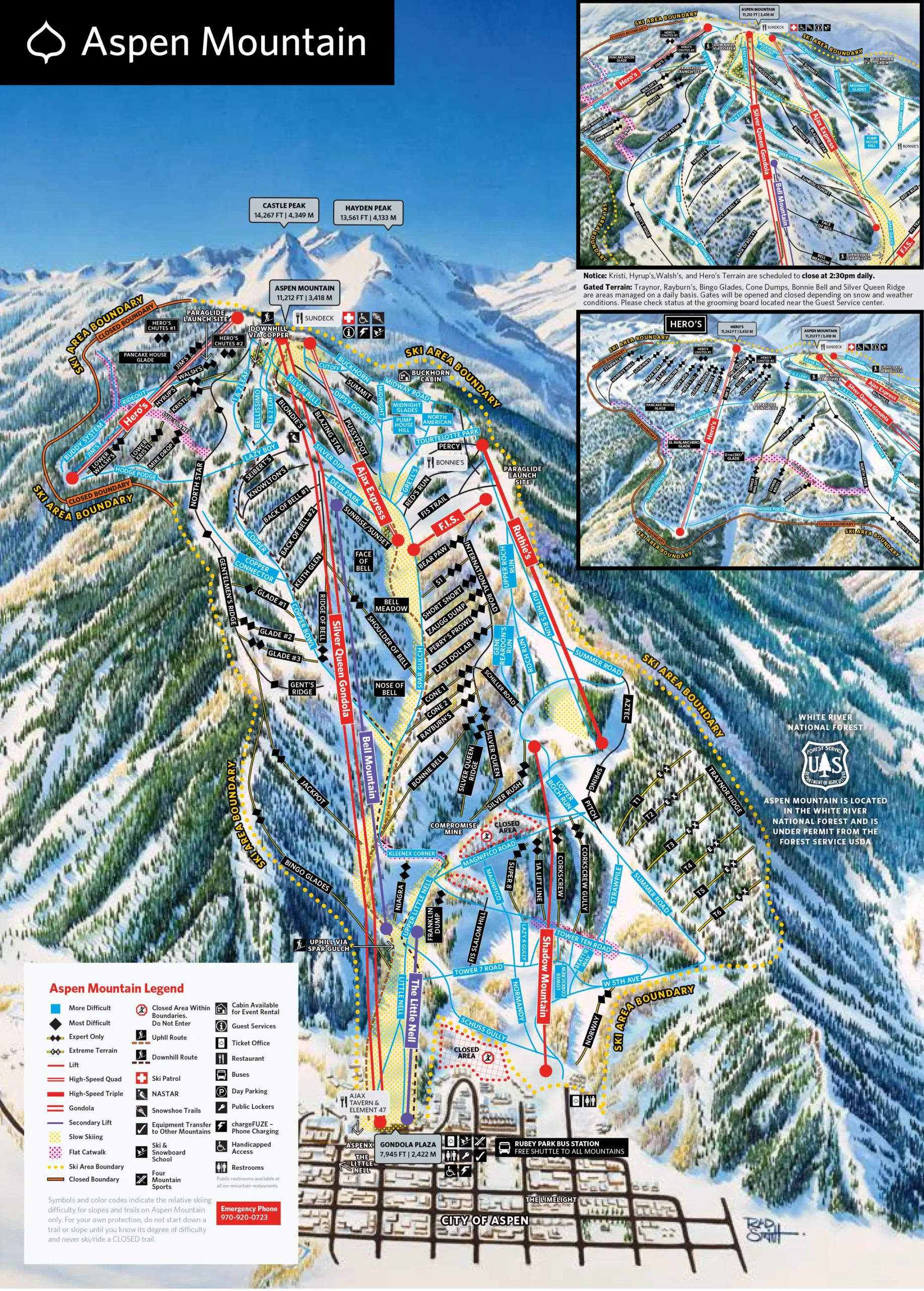
Click to view full size
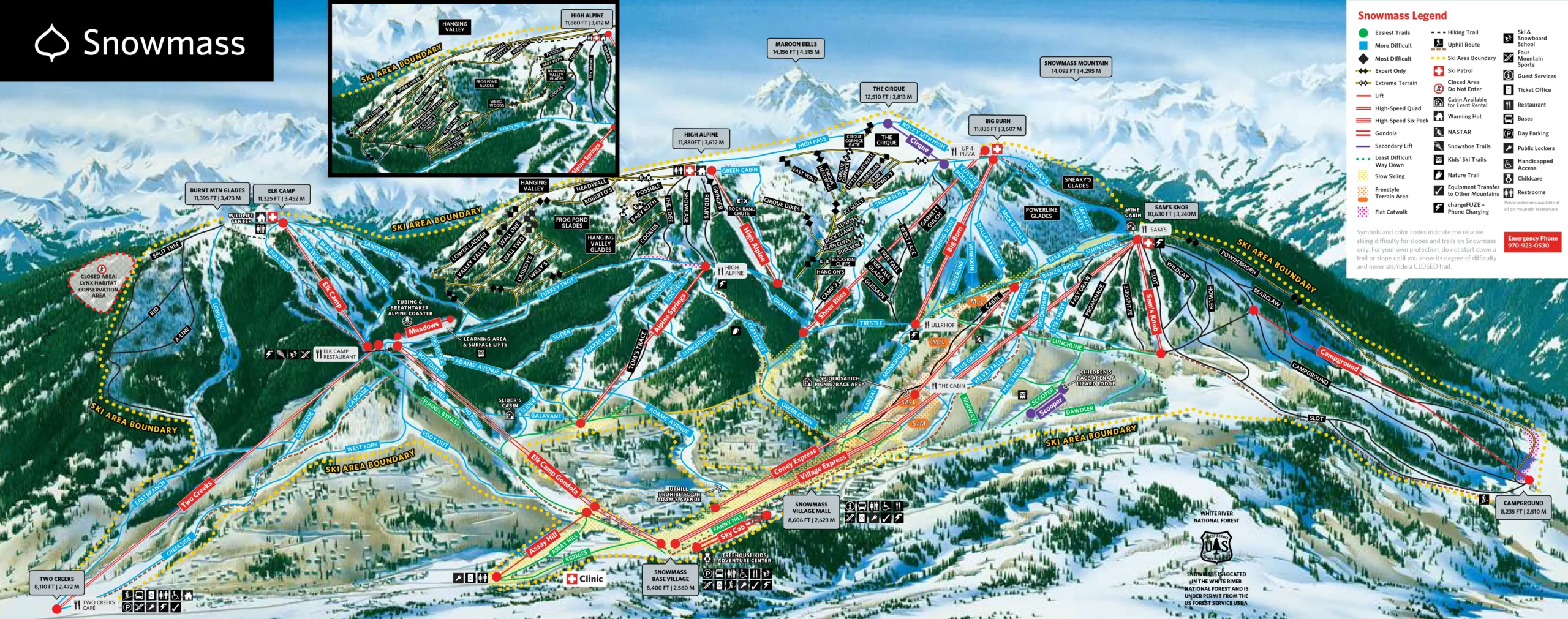
Click to view full size
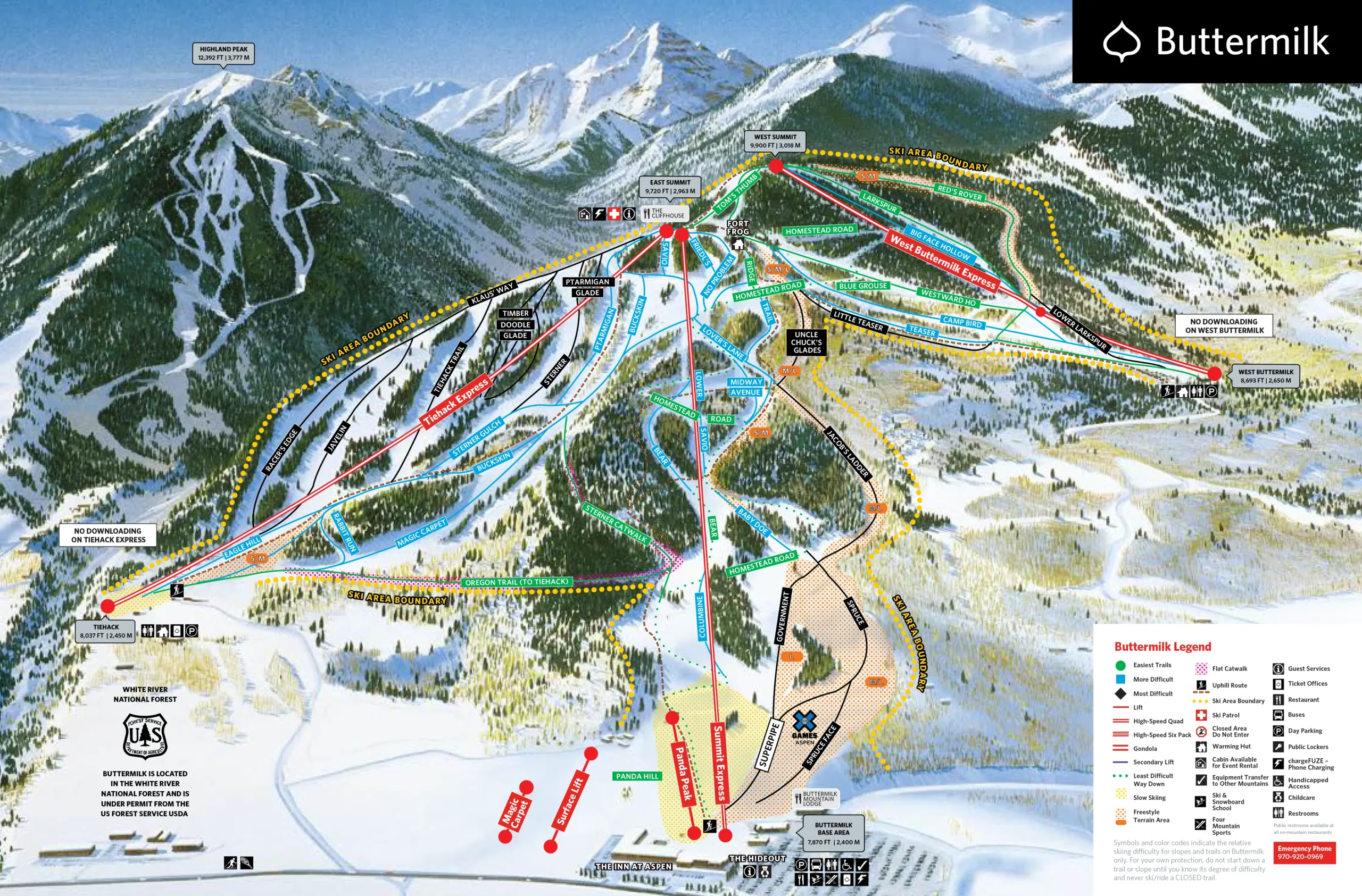
Click to view full size
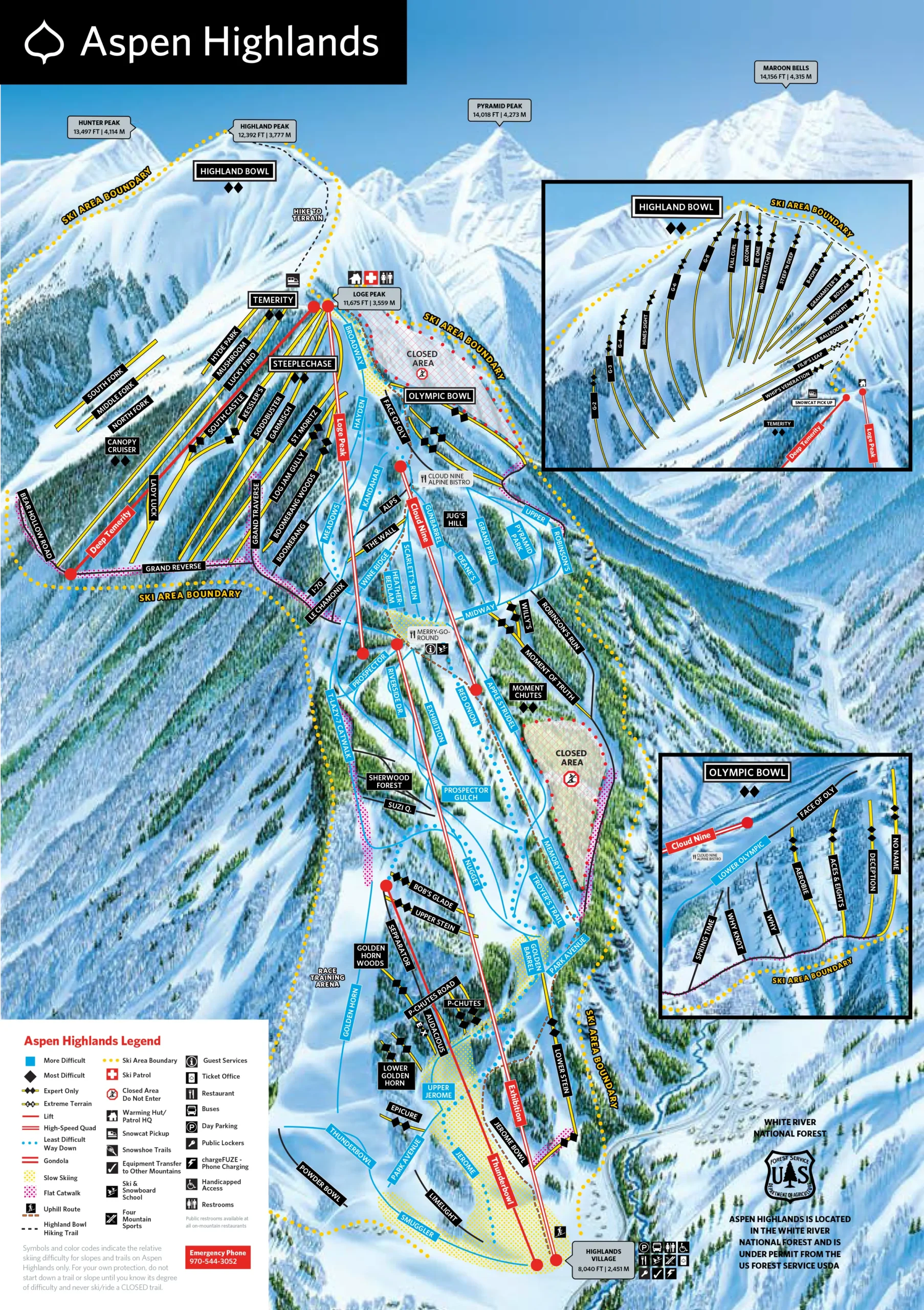
Click to view full size
Current Conditions
27°F
clear sky
Weather data provided by OpenWeatherMap
Updated: 10:07:58 AM
Aspen Snowmass features four unique ski areas that each provide completely different terrain and experiences.
Aspen Mountain, known locally as Ajax, rises directly from downtown Aspen and caters primarily to expert skiers. Despite being the smallest of the four (675 acres), it packs a punch as the majorty of the mountain is covered in black and double black skiing.
Aspen Highlands might be considered the local's favorite, with almost 80% of the terrain designated black or double black. This is also the home of the iconic Highland Bowl, which requires a stout bootpack to ascent but rewards you with some of the most pristine powder conditions in Colorado—not to mention the incredible views.
Buttermilk is home to most of Aspen's beginner terrain, as well as a slew of terrain parks as it's the host of the annual Winter X Games.
Snowmass, the largest of the four, dominates the acreage category with over 3,300 acres of skiable terrain. Among those acres are everything from low-pitched learning areas to challenging runs on the Cirque and Hanging Valley Headwall.
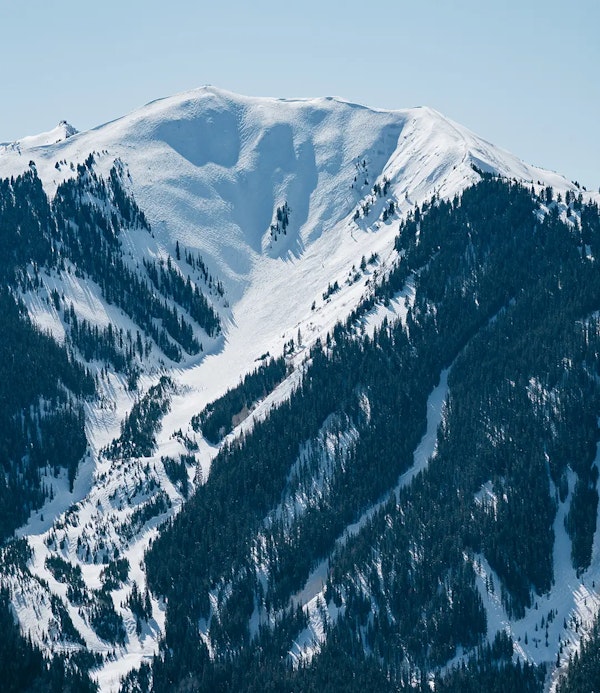
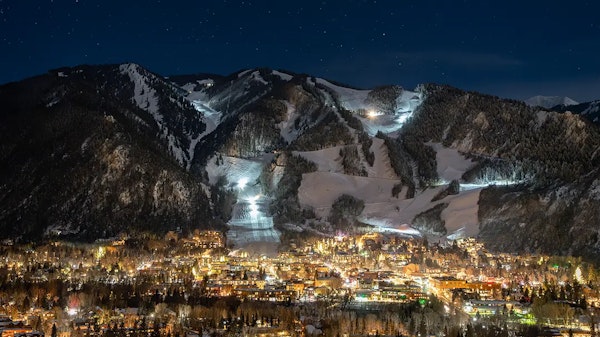
Aspen is not known to be the cheapest ski destination around, but with a bit of planning, you can have a killer trip on any budget. The four mountains provide virtually zero lift lines, and the city itself has an infectious vibe thanks to its vibrant music and food scene.
Aspen/Pitkin County Airport (ASE) is just six miles from the resort and hosts direct flights from Chicago O'Hare, Denver, Dallas/Fort Worth, Houston, Los Angeles, San Francisco, Austin, Atlanta and Phoenix. If your city doesn't have a direct flight to Aspen, you can also fly to Eagle County Regional Airport, about 70 miles from Snowmass, or Denver, which is about 200 miles away.
From the airport, transportation options include car rentals, ride-share services, taxis or busses. The Roaring Fork Transportation Authority (RFTA) offers efficient bus services connecting the area. In the morning, take the free bus system to the ski hill, or you can use the paid lots at Buttermilk, Highlands and Snowmass
